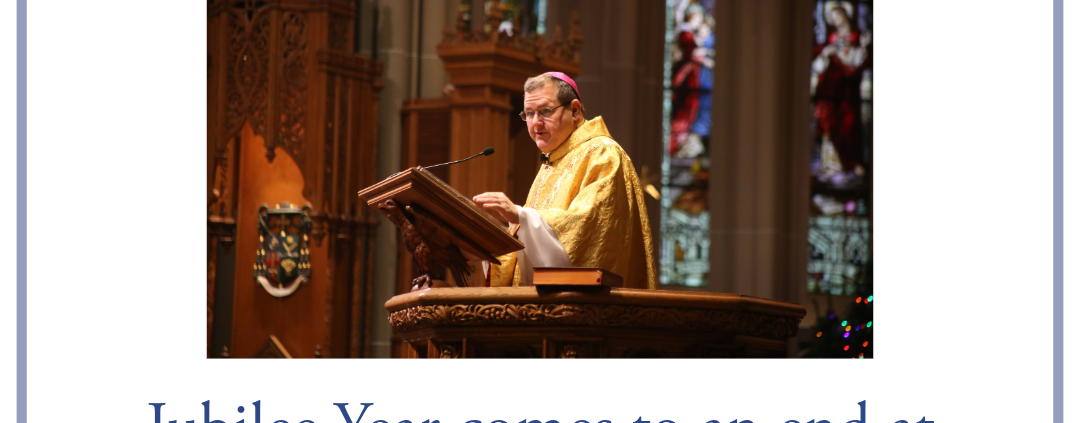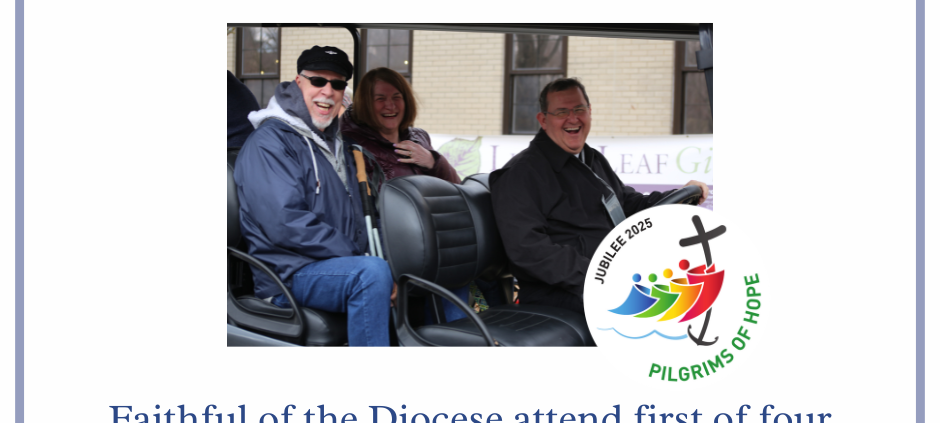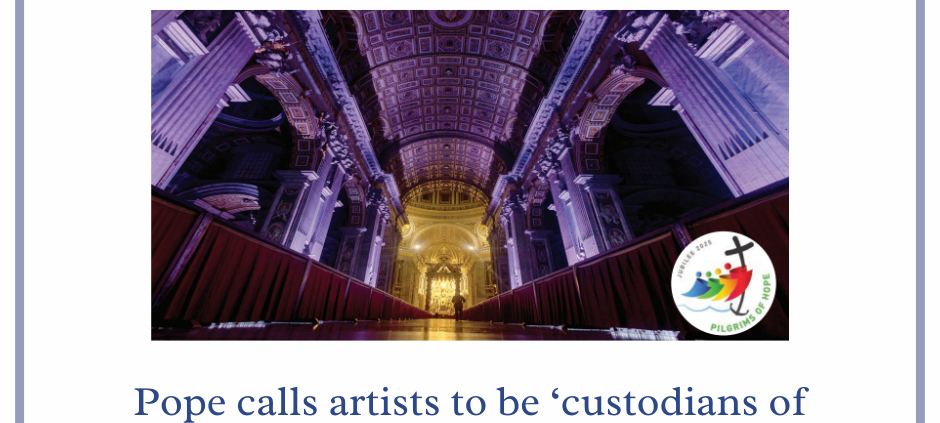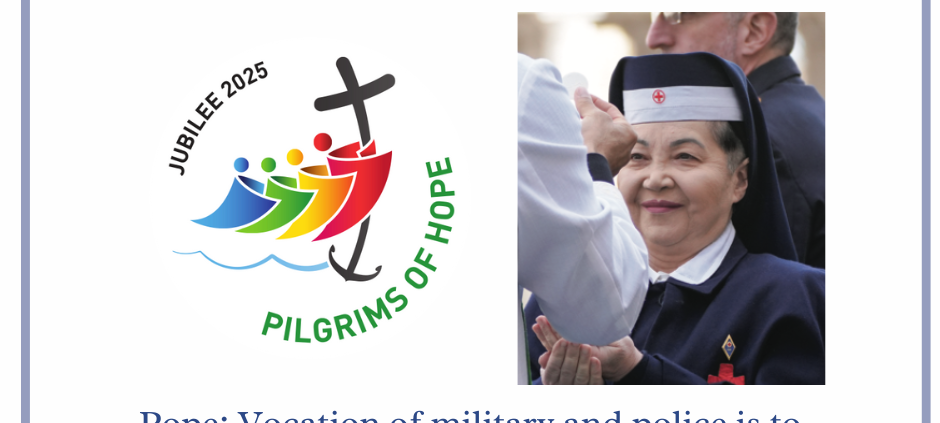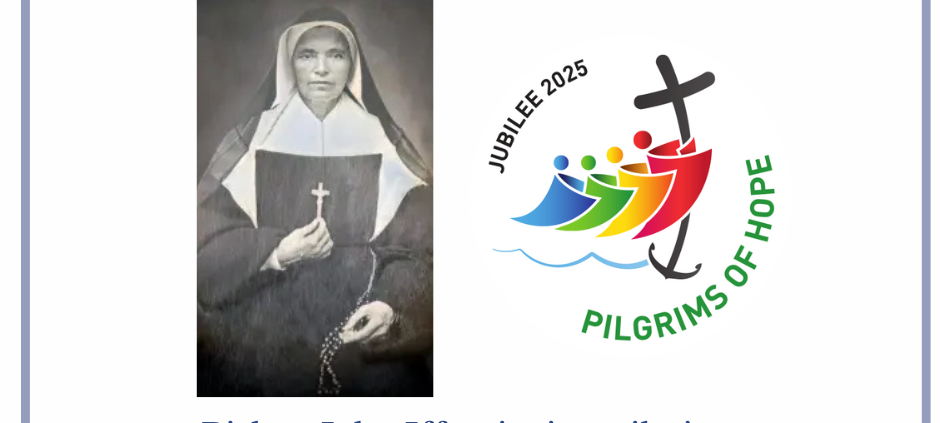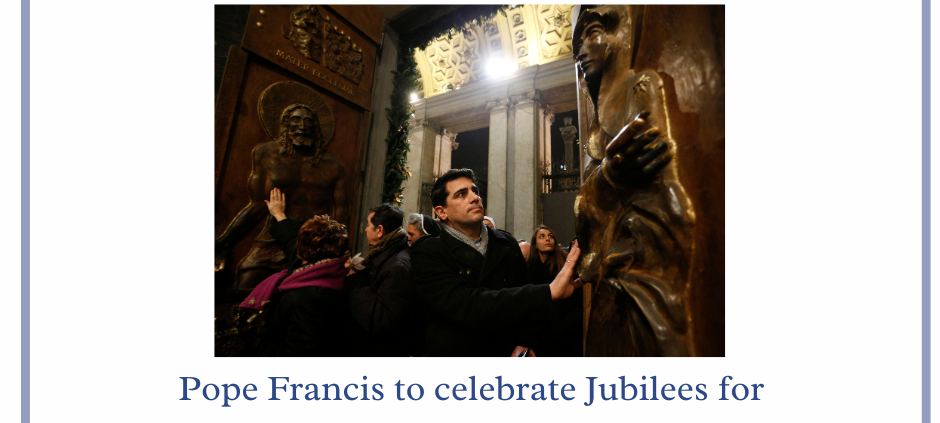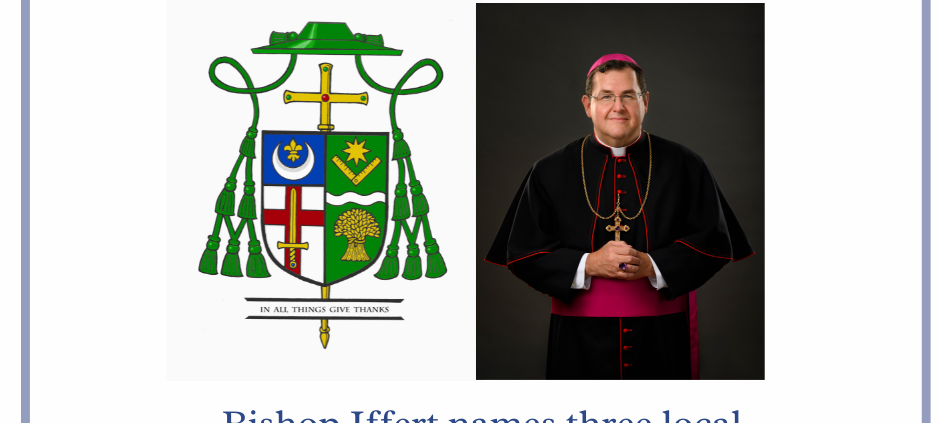Laura Keener
Editor
In June, Bishop John Iffert launched in the Diocese of Covington a Campaign of Mercy, an initiative of evangelization coming out of the With One Heart diocesan pastoral plan. As part of the Jubilee Year 2025, Pope Francis has announced that a person can receive as many as two indulgences a day by completing acts mercy. The Messenger sat down with Bishop Iffert to gather his thoughts on how the Holy Spirit may be working in the life of the local and universal Church through the theme of mercy.
Question: Even going back to the Extraordinary Jubilee Year of Mercy, Pope Francis was already writing about how service is a journeying to Christ, or a pilgrimage to the face of Christ. This year, Pope Francis is allowing for an indulgence for corporal works of mercy performed. How has the Bull (Pope Francis’ official pronouncement of the Jubilee Year) incorporated the corporal works of mercy as part of the Jubilee Year.
Bishop Iffert: On Christmas Eve, Pope Francis will inaugurate the Jubilee year 2025 in Rome by opening the first Jubilee door. He has chosen the motto of the Jubilee Year, Pilgrims of Hope, and it’s really interesting.
Unlike during the Year of Mercy, where he authorized Jubilee doors all over the world and you could receive the Jubilee indulgence just by passing through one of these doors and praying for the intentions of the Holy Father with all the usual requirements of receiving an indulgence, this year, he has not authorized those Jubilee doors in any diocese outside of Rome.
In one way, you might think, well, he’s really narrowed that offer of mercy, but what he’s really done is broaden this. What he’s doing is, he’s keeping the Jubilee doors and the connection to that indulgence in Rome. But then he’s allowing folks to be able to gain that indulgence in a variety of ways — by visiting any diocesan cathedral or by visiting any other historic church designated by the local bishop, or visiting any number of shrines or and this, I think is very important to us, in performing a work of mercy, especially for a person who is needy.
There is this wonderful sentence, and I’m paraphrasing, I believe it is the letter in which the pope establishes the indulgence for the Jubilee Year, and he says, whenever we spend time with a person who is in need doing a work of mercy for that person, we are entering on a pilgrimage to encounter the face of Christ in our neighbor. I just think that’s beautiful. That is a sentiment that I’m going to be living with for a long time and a truth that I’m going to be living with and teaching for a long time.
This pilgrimage of hope, where we emphasize hope, this virtue that is a kind of fortitude, a kind of an expression, a kind of courage lifted to a supernatural level, this hope that is certain and constant and that knows that God has a plan for us and is bringing it to good, this hope is connected with our acting in a loving and compassionate and merciful way to others.
We know that faith, hope and love they all blend. Faith and hope lead us into love and charity and mercy and compassion. Well, this is, this is the journey we’re on. We’re on this hope-filled journey, not only that God’s compassion will rule in our world, but that we will be made over in the image of that compassion and that mercy.
There are three great things that are happening this year for us here in the Diocese of Covington. One is the inauguration of the Jubilee year. We’re also completing the last year of the Eucharistic Revival, which is focused on walking with another in Eucharistic faith, accompanying another in Eucharistic faith. And then here locally, as part of our pastoral plan, we are inaugurating a Campaign of Mercy. We’re inviting Catholics to enter more fully into regular works of mercy, to make this a regular part, a monthly part, a weekly part, a daily part of our life to be doing works of mercy for those around us.
These kinds of great themes come together, to me, it all speaks of one thing, which is the Church is awakening to this reality that we are the mission of Jesus, the mission of Jesus to be mercy for the world, to be mercy for one another, to proclaim the kingdom and the mercy of the Father, the love that the Father has for each one of us. This is our mission.
Everything about these great celebrations and so much of what we find in our pastoral plan and everything that the Church speaks these days seems to be clarifying that and reinforcing that we’re the living mission of Jesus, and that that mission is a mission of mercy for everyone.
That’s what the point this Jubilee Year is making by connecting that pilgrimage motif with the theological virtue of hope and with the work of mercy. And I’m just inspired by it.
Question: You mentioned that the Campaign of Mercy, the Eucharistic Revival and now the Jubilee Year as having a common theme of serving and journeying with each other. That seems to me to be a work of the Holy Spirit. With the Campaign of Mercy, we’re using the corporal and spiritual works of mercy as tools for evangelization. Tell me more about that concept.
Bishop Iffert: In the Campaign of Mercy, that comes out of our pastoral plan, which came out of consultations with people at the grassroots level, what we’re doing is, we’re inviting, first, ourselves to enter into works of mercy so that we can be more deeply converted to Christ. Not only to do volunteer work, but to do it specifically as a work of mercy for another inspired by the love of Christ. In other words, we love Christ, and so we’re going to, in action, love our neighbor, especially our neighbor who is in need. We’re going to commit to that, and we’re going to live that way.
Then we’re going to do the next step, too, which is we’re going to reflect on that experience, both alone and with others, with other Catholics. We’re going to reflect on that. We’re going to ask ourselves, where did I encounter Jesus in my neighbor? Where did I encounter Jesus in this work of mercy? Where did I meet the crucified Jesus who suffers on the cross for us for mercy? Where did I meet that Jesus? And what is Jesus asking of me? What is that merciful Jesus asking of me in my attitude towards others? Then at some point, I’m going to invite people to say, okay, let’s reach out to someone who we know is a Catholic person, but who maybe isn’t as connected with the life of the Church, maybe isn’t as connected with this life of merciful care of others. Let’s invite this person to join us in doing that work of mercy and then join us in reflecting on it and encountering Jesus there. We’ll take that risk.
The whole idea, of course, is that we encounter Jesus in this way of life. And so, we’re going to invite people back to this way of life, trusting that they, too, will encounter Jesus there, and that meeting Jesus face to face in service to those who are in need, that that will be an impulse for conversion, for deeper conversion in Christ.
At some point, we’re going to, again, put out a call and say, okay, now think of somebody in your life who is not churched at all, who maybe even hasn’t heard much about Jesus, and invite them, take the risk of inviting them to do this work of mercy with you. And then maybe dare to invite them to pray with you about it. And again, the whole idea being that we believe that we will encounter Jesus in the face of our neighbors, and that that encounter with Jesus calls us to deepening conversion.
We’re going to employ this doing of these works of mercy, as a way to invite people to meet Jesus and to respond to His invitation to love others. It’s going to become really one of the great strategies for evangelization. That’s a 50-cent word that just literally means sharing the good news of Jesus, sharing the good news of Jesus with others. That’s going to be a primary strategy for us for three or four years of the Diocese of Covington. That’s a response to what we see as coming out, that it is this work of the Spirit.
Another thing, you said that all of this coming together really does seem like it’s the Holy Spirit. You know, there’s this theological concept, we speak of two offices in the Church — the magisterium, which is the teaching office, which is primarily the bishops around the world teaching in union with the Pope, but also, this office that we call the “sense of the faithful.”
The Church believes and proclaims that the whole body of believers cannot be misled. That the Holy Spirit speaks, yes, through our pastors, through the magisterium, but also in the body of believers. And that while individual believers can be misled, that the Holy Spirit dwells within the temple that is the whole Church. The whole Church, the temple of the people of God, cannot, as a body, be completely misled about the work of God and the movement of the Holy Spirit and the life of the Church, especially about anything that would jeopardize our salvation.
I really do think that this rediscovery that we’re the living mission of Jesus, we’re the living mission of the Spirit of Jesus, that we’re all called to carry on his mission of mercy, compassion, self-sacrifice, gifted self-donation, we’re all called to be that. I really do believe this is a sense where the Holy Spirit is inspiring the sense of the faithful and inspiring the magisterium towards the sense of truth to bring new life and new birth to the Church.
Question: You’ve said before about acts of service performed during the Campaign of Mercy and then here again with the indulgences, that we’re not doing these things to tick boxes. I often hear people say that when they’re involved in works of mercy that they get more out of the experience than what they give. How can acts of mercy, then, develop someone’s personal faith life?
Bishop Iffert: That’s exactly right. The Church does offer an indulgence for the Jubilee Year. Indulgences are an important category that bring not only a remission of sin, but also a healing of the effect of sin in our life, a healing of that destructive effect that sin can have on us.
An indulgence is not just a formality. It’s not a trick. It’s not a get-out-of-purgatory-early card, right? What is it? It is an expression of a desire for God’s grace to work in us in a direct and powerful way. To really change us and to help us to grow closer to the heart of Jesus. That’s what this is all about.
When we talk about the Jubilee indulgence, Pope Francis, another way he has made this is, he says you can receive an indulgence as often as twice a day during the Jubilee Year, as long as one of those you are applying not to yourself, but to the poor souls in purgatory — the suffering Church. This is the spirit. It’s not about bean counting. It’s not about adding up the number of days, right?
What is it about? It’s about inviting the Spirit of God to heal us and to draw us into deeper conformity with Christ. That is really what assures our salvation.
We believe that the more we live like Christ, the more the grace of God will be unleashed in our lives. That’s why we’re emphasizing this aspect of being part of the corporal and spiritual works of mercy. These are powerful actions that change us from the inside out; that help us to encounter Jesus. By entering into this pilgrimage to encounter Jesus in our neighbor, we’re making ourselves available so that Christ can meet us, that we can see him face to face, and that he can change us and heal us, and by healing us, heal our world. That’s what it’s all about.

